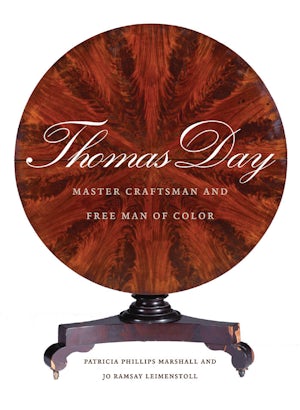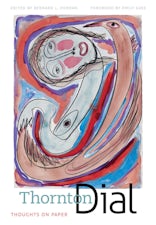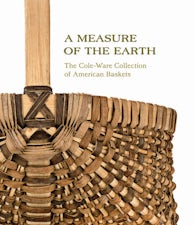Thomas Day
Master Craftsman and Free Man of Color
By Patricia Phillips Marshall, Jo Ramsay Leimenstoll
Foreword by Jeffrey J. Crow
320 pp., 8 x 11, 20 color and 243 b&w illus., 4 maps, appends., notes, bibl., index
-
E-book EPUB ISBN: 978-0-8078-9571-9
Published: May 2010 -
E-book PDF ISBN: 979-8-8908-7492-4
Published: May 2010
Richard Hampton Jenrette Series in Architecture and the Decorative Arts
Buy this Book
- E-Book $29.99
Awards & distinctions
2010 Ragan Old North State Award, North Carolina Literary and Historical Association
A 2011 Choice Outstanding Academic Title
In this lavishly illustrated book, Patricia Phillips Marshall and Jo Ramsay Leimenstoll show how Day plotted a carefully charted course for success in antebellum southern society. Beginning in the 1820s, he produced fine furniture for leading white citizens and in the 1840s and '50s diversified his offerings to produce newel posts, stair brackets, and distinctive mantels for many of the same clients. As demand for his services increased, the technological improvements Day incorporated into his shop contributed to the complexity of his designs.
Day's style, characterized by undulating shapes, fluid lines, and spiraling forms, melded his own unique motifs with popular design forms, resulting in a distinctive interpretation readily identified to his shop. The photographs in the book document furniture in public and private collections and architectural woodwork from private homes not previously associated with Day. The book provides information on more than 160 pieces of furniture and architectural woodwork that Day produced for 80 structures between 1835 and 1861.
Through in-depth analysis and generous illustrations, including over 240 photographs (20 in full color) and architectural photography by Tim Buchman, Marshall and Leimenstoll provide a comprehensive perspective on and a new understanding of the powerful sense of aesthetics and design that mark Day's legacy.
Published in association with The North Carolina Museum of History. Photography by Tim Buchman was supported by a grant from Preservation North Carolina
About the Authors
Patricia Phillips Marshall is curator of decorative arts for the North Carolina Executive Mansion and the North Carolina Museum of History.
For more information about Patricia Phillips Marshall, visit
the
Author
Page.
Jo Ramsay Leimenstoll is professor of interior architecture at the University of North Carolina at Greensboro.
For more information about Jo Ramsay Leimenstoll, visit
the
Author
Page.
Reviews
"Exhaustively researched . . . with . . . gorgeous full-color photographs of more than 160 pieces of furniture and architectural woodwork that Day produced between 1835 and 1861."--Raleigh News & Observer
"Give[s] hints of the artisan's hidden inner life. [Day] came across as subservient in his newspaper ads, promising that commissions 'will be thankfully received and punctually attended to.' But he sent his children to an abolitionist boarding school in Massachusetts and wrote them that he longed to leave 'the Oppressive South.'"--The New York Times
"Day's incredible story is exhaustively researched and deftly illustrated. . . . A fascinating study of both the entrepreneur and his craft. . . . [With] eye-catching photographs and engrossing text. Highly recommended."--Library Journal
"An excellent book about the craftsman's remarkable life. Building upon decades of research, the authors have produced the most comprehensive publication on this figure to date. . . . The photographs . . . are abundant and of high quality."--American Craft
"This beautifully-illustrated book offers exceptionally skillful and sensitive readings of the artifactual and textual evidence. It is recommended for academic libraries, museums and large public libraries, and for all collections that support programs in African American studies and American cultural history more generally."--Art Libraries Society of North America
"Comprehensively researched and delightfully written. . . . The authors successfully advance the body of knowledge of free African American craftsmen in the antebellum period, while painting a vibrant image of the world in which Thomas Day operated. . . . Will be indispensable for all collections that focus on art history and the decorative arts, African American history, the antebellum era, and regional collections. . . . Essential."--Choice




